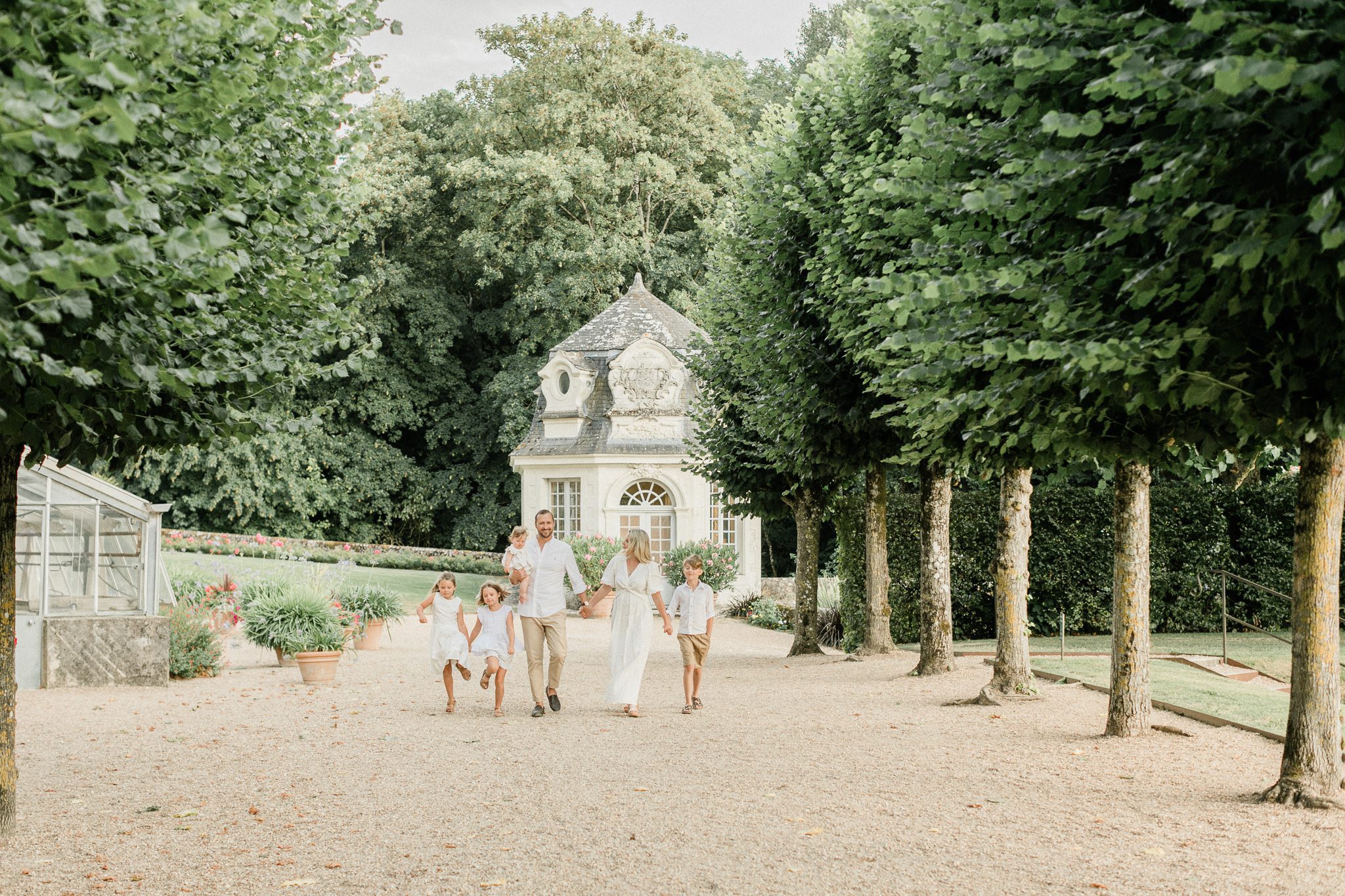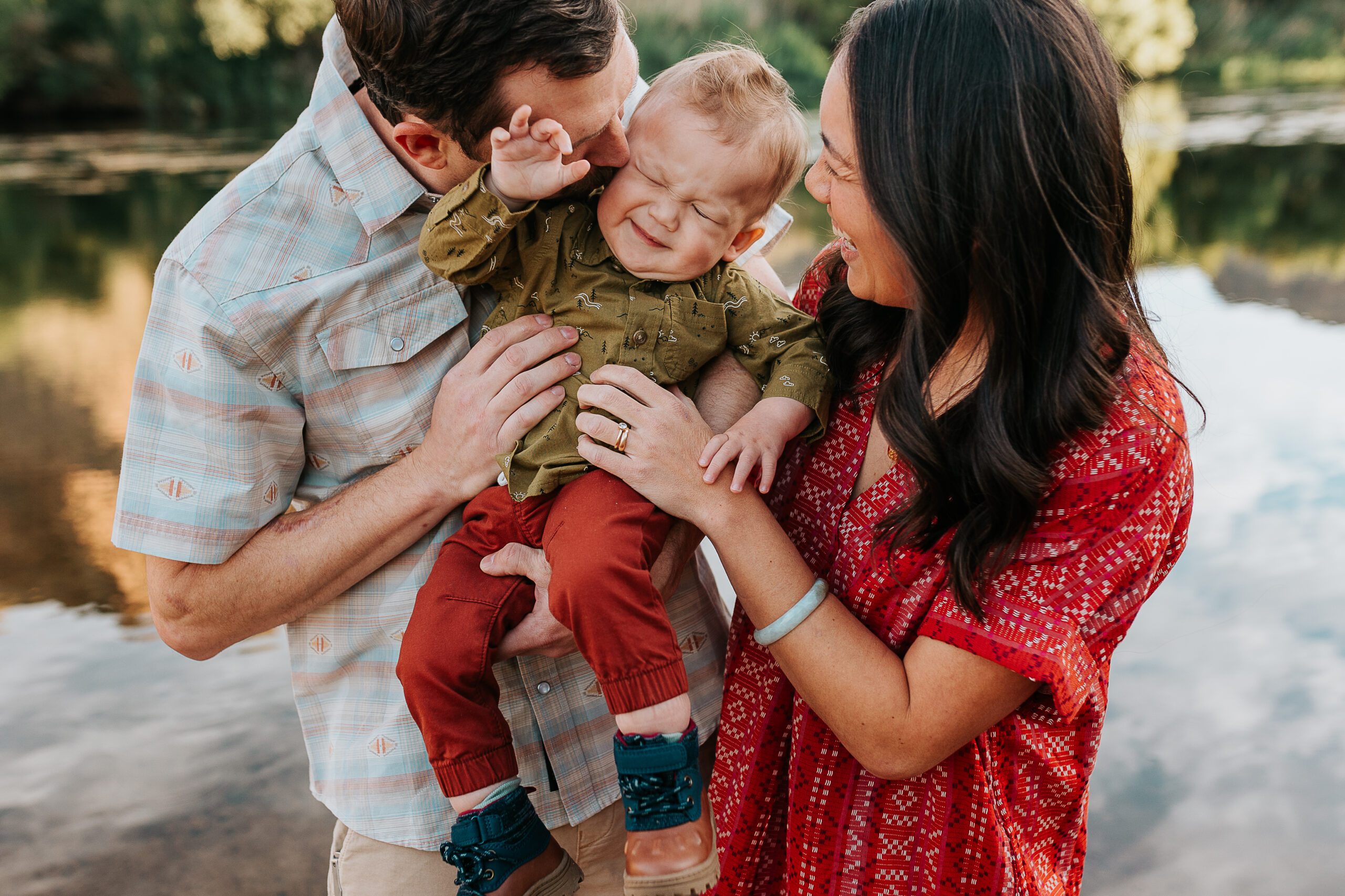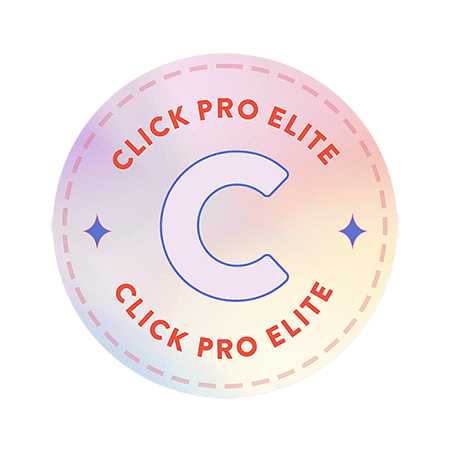16 Experts Share Their Best Advice on Starting a Family/Newborn Photography Business
Starting a family photography business can feel a little overwhelming, right? You’re not just figuring out how to take stunning photos—you’re building a business, too. Pricing, client communication, mindset, setting boundaries… it’s a lot to juggle. But here’s the good news: you don’t have to figure it all out alone.
I’ve rounded up advice from 16 experienced photographers who’ve been where you are. These are people who’ve walked the path, learned the lessons, and come out on the other side with thriving businesses. This post is like your all-in-one roadmap for starting a family photography business. From setting your prices with confidence to creating healthy boundaries with clients, you’ll find strategies to avoid burnout and set yourself up for long-term success.
Whether you’re dreaming of going full-time or just looking to grow your side hustle, this wealth of knowledge will guide you every step of the way. Grab your notebook, pour some coffee, and let’s dive into the advice these pros wish they had when they were just getting started!
1. Jamie Rubeis
Owner/Photographer,
Jamie Rubeis Photography
@jamierubeisphoto

“I think my best piece of business advice for someone just getting started would be to make sure to break down your cost of doing business before determining your price structure. Ultimately we want to make money doing what we love. That is the goal, right? However, what we spend just to operate our business is often overlooked. Especially if you have never ran a business before. Understanding these costs is so important to price your services competitively while ensuring profitability. ”
2. Sam Liddicoat
Owner/Photographer,
Little Wood Studio
@littlewoodstudioadelaidehills

“Hello! I’m Sam Liddicoat and I’m the owner and photographer at Little Wood Studio. I’m a newborn and family photographer in Adelaide, South Australia and I have been running my home-based newborn studio and outdoor family sessions for 15 years now! Here are my 3 tips for Photographers starting out in business!
-
Find Your Focus (Literally and Figuratively)
When I began, I said yes to everything. Clients brought me Pinterest boards full of ideas, and I happily recreated their visions. Parents arrived with (UGLY!) props for newborn shoots, and I used them all. It was a great way to learn, but over time, I developed my own voice and vision.
Now, clients come to me for my style of photography. They trust me to create something unique to their story. It’s incredibly rewarding as a creator and offers clients a more meaningful experience.
-
The Business Side Is Real
I thought photography would be all about creativity, but running a business is a whole different ballgame. From pricing and contracts to tracking expenses and handling invoices, I quickly realized how important it is to have a system that works for me and my clients.
I’ve tried paper forms, paperless solutions, and finally landed on something seamless—using Unscripted. My clients now receive a single link with their invoice, contract, booking questionnaire, and even my client guide. It’s professional, efficient, and saves me hours of admin time. Find a workflow that fits you and makes life easier for everyone involved!
-
Your Portfolio Is Your Voice
When building your portfolio, it’s tempting to say yes to every free shoot a friend asks for. But I’ve learned to be selective. I focus on shoots that align with the type of photography I want to be known for, and when I want to expand my portfolio, I choose what I’m shooting and look for clients who will help me achieve my vision.
In exchange for offering a few free photos—or generously, the whole gallery—I make sure I get something in return. The use of all the photos for my marketing is the first requirement and then additionally I look for cross-promotion on social media, or a shoutout from the client to ensure the exchange is mutually beneficial. This approach helps build a portfolio that truly represents my brand, whilst also giving the client beautiful images to keep. Win, win.
It’s a big learning curve, but you’ve got this!
Good Luck!”
3. Rebecca Sehn
Owner/Photographer,
Rebecca Sehn Childhood & Family Portrait Photography

“Make sure you’re doing work that inspires you! Would you be excited to book yourself to photograph your own family? If not, create portfolio shoots that reflect the type of work you want to attract. Focus on sharing only the type of portraits you truly want to be shooting more of. Remember, it’s okay not to share everything you shoot!”
4. Rachel Mostofizadeh
Owner/Photographer,
Rachel Elizabeth Photography

“Be yourself and find a corner of the market where you will be celebrated for being yourself!”
5. Cristin More
Owner/Photographer,
Cristin More Photography

“My biggest piece of advice it to find one word or phrase that defines your work and try to deliver that word every time. Some people are classic, or emotional or connected, for example. Mine is ‘joy’ and I try to make sure to bring a joyful spirit and capture joy in every shoot. You can create a recognizable brand and make marketing even easier for yourself by doing this!”
6. Charis Kauffman
Owner/Photographer,
Charis Elisabeth Photography

“Learn how a business works – what the costs are, what taxes and how to think of all the time involved not just the session time. The business side is more important if not the important part about lasting for a long time. Take a course (highly recommend Lindsays) and focus not just on the technical side but really focus on the business side. It can be so easy especially in the beginning to get caught up in wanting to be featured and make work like so and so rather than in putting in the groundwork to run a sustainable business. There are now multiple courses out there and they will be well worth the money.”
7. Cindy Tucey
Owner/Photographer,
Cindy Tucey Photography

“My advice to photographers starting their business is to begin by building a portfolio and developing your style. Photograph family and friends, photograph your kids, do model calls, and practice your art as much as possible in order to hone your photography skills and develop your unique style. Don’t worry about doing some free sessions for family and friends in the beginning, but be sure to price yourself for profit even from early on. Although there is a lot of competition, you will burn out quickly if you price yourself too low. Make sure your prices make the sessions worth your time. Believe in yourself!”
8. Debbie Camba
Owner/Photographer,
Debbie Camba Photography

“It’s not just about creating beautiful images—it’s about making the experience smooth and enjoyable for both you and your clients. Even with a great website and detailed contract, you can’t assume clients will read or remember everything. That’s why clear, consistent, and repeated communication is so important.

“I have a couple pieces of advice –
-
Hacks for staying confident:
- I put together a word document of my posing flow, jokes to make children laugh, games to play for candid smiles, things to remember (ex: remove hair ties, phones from pockets) and have some picture examples of my favorite poses. I review this document before each session.
- I arrive at a session 30-60 minutes ahead of time, walk the location and visualize the family in each spot to give me a game plan on what to do. I mentally prepare myself that things will be chaotic and may sometimes go awry, but if I continue to show excitement and laugh during the session, the families will too!
- My client questionnaire includes questions like: describe your children, what are your dream shots and do you have any insecurities I should know about. This helps me feel prepared for the session especially if I’ve never met the family before.
-
Client Communication:
- I love photographing families that are relaxed, go-with-the-flow and playful. I emphasize this multiple times in my website copy, client prep guides, blog posts and emails prior to our session together. These are the families I want to attract and as a result, the majority of my families have fit these attributes.
- Happy clients are educated clients. I have a 3 tiered pricing system and make sure they know that multiple times. I have it in my website copy, my client prep guide and require them to sign their initials in the contract to make sure they’ve read it.
-
Pricing for Profit:
Don’t let your money sit in your checking account, watch it grow by putting some of your profits into a 401k (ex: Fidelity, Vanguard) or a high yield savings account.
-
Miscellaneous:
Make photographer friends! We all have unique styles and visions and there’s enough clients to go around. They are not your competition. Photographer friends understand those client horror stories (and can laugh about them with you), cheer you on when you hit your goals, let you borrow equipment and be a sounding board for your ideas. They’re awesome!”

“As photographers, we pour our hearts into creating stunning images for our clients—but when it comes to pricing, many of us struggle to find that sweet spot where passion meets profit. Setting your prices isn’t just about what the market dictates; it’s about building a sustainable business that supports your goals and your lifestyle.
The first step? Understand your Cost of Doing Business (CODB). CODB includes everything from gear and software to studio rent, marketing, insurance, and even that latte you grab before every session. Add it all up, then divide it by the number of jobs you expect to book annually. This will give you a baseline for what you must charge to simply break even.
But breaking even isn’t the goal—you want to make a profit. Decide how much you want to take home each year. Be realistic about how many sessions you can manage while still allowing time for marketing, editing, and, yes, vacations. Pricing for profit means factoring in paid time off so you can step away, recharge, and avoid burnout.
For example, if you plan to work 48 weeks a year, taking four weeks off for vacation, holidays, or sick days, calculate your annual earnings goal and divide it by the hours you’ll actually work. This ensures you’re not undervaluing your time or overextending yourself to meet your financial goals.
Ultimately, pricing for profit is about valuing your work and your well-being. A thriving photography business isn’t just one that stays afloat—it’s one that allows you to grow, achieve your dreams, and live the life you’ve envisioned.”

“If I could give a photographer just starting their business one piece of advice I would stress the importance of finding a community of like-minded folks. This could be other photographers or even just other small business owners.
It can feel lonely when you are running a business on your own, especially when we as photographers own the whole creative process. Having a community allows you the space to bounce ideas off of other entrepreneurs, learn from others’ experiences, and share wins and losses. Referrals given and gained are also a perk of being part of a network and cost you nothing. Given the choice to go it alone or with a group of like-minded friends, always choose company.”
12. Susannah Treadway

13. Jennifer White
Owner/Photographer,
Jen White Photography
Albany, Oregon Portrait Photographer | Jen White Photography

” Client communication is key to a great client experience, but it can be very time consuming. I wish I’d understood how important this is and how to automate it earlier in my business. I use Picsello as my CRM, and I love it because I have set up email automations. If you’re not ready for a CRM yet, I highly recommend creating email workflows and templates and either saving them as drafts in your gmail or in google docs. When an inquiry comes in, I have an auto responder that goes out immediately to let them know it landed in my inbox and that I’ll get back to them within one business day. Then I have a basic inquiry response email saved in Picsello that I can take a few seconds to tweak and send out. I immediately text the inquiring client to let them know I got their email and responded and to be sure to check their spam if they don’t see it. I know some photographers hate texting clients, but it doesn’t bother me. I also have 3 follow up emails that are automatically sent to check in over the next week if they don’t respond to the first email. Clients get busy. If they reached out, you’re not bugging them by following up, I promise! Then they get an automated email a week before their session and also a day before their session with the date and location. I also send follow up emails after I deliver their gallery thanking them for their business and asking them to leave me a google review. This sounds like a lot of emails, but it’s so easy because most are automatically going out with no work on my end.
Creating boundaries is something I could talk about for ages. There’s so much that goes into this. Sometimes we think this is setting boundaries for clients, but it starts with us as business owners. I would say the area that I most struggled with this at first was with work hours. This is a business that you could work 24 hours a day if you let yourself. But I promise your family and your health will suffer if you do that. If you want to work late at night, that’s OK. But that’s different than feeling scattered and like you didn’t get everything done during the day and so you “have to” work late at night and neglect rest or family time. Since I have been better at setting boundaries on my work time, I’m less burned out. If I’m supposed to get off work at five, I’m off work at five. If I didn’t get my work done, that means I need to reevaluate what I’m taking on and/or plan better when I set my schedule (I’ll go more into that below). I also absolutely do not take any sessions on Sundays or do any editing on Sundays. The only work I do on a Sunday is respond to inquiries if I see the email come through, but I usually even ignore my email. My email response to inquiries from my website lets people know I will respond during the next business day and that evenings and weekends. I’m photographing clients or spending time with my family. If a text or email comes in from a client after business hours, I don’t respond unless it’s something that needs an immediate response. And most things can wait. The only exception is that I will usually respond to booking inquiries.
I sit down at the beginning of the week and map out the hours I plan to work that week. This can change from week to week because if I’m working more evenings that week, I need to plan more family and personal time in the mornings. But I don’t just put “Work” on my calendar. I write the specific task I will be doing-as detailed as possible. 2:00-3:00 Edit mini sessions. 3:00-4:00 write a blog post on things to do in Albany with kids, 4-5:00 Schedule one week of instagram posts, etc.
I’ve also had to set boundaries on working when I’m the primary parent. If I’m taking care of my children, I really can’t be working. If another parent can’t watch the children, childcare is essential.”
14. Rhiannon Stuiso

“Advice for someone just starting out based on developing your style:
15. Tina Krafts

” I have been in business for 11 years now, and boy do I feel like I have learned a lot of lessons during that time. Above all else, though, the principal piece of advice that I would give to photographers who are just starting out with their businesses is to calculate your cost of doing business (CODB), and to use those numbers as the foundation for setting your pricing structure. I can’t tell you the number of times I have seen photographers pose this question in online photography forums: “Based on my images, what do you think I should be charging for my work?” Not only does that question solicit answers based on entirely subjective opinions, it demonstrates a willingness to develop a pricing structure based on perceptions of what potential clients are willing to pay, rather than the amount that it is required to meet expenses and earn a living wage. There are various CODB calculators online but, in general, photographers should be taking into consideration expenses like equipment costs, studio rent, insurance, backup sources for client images, cost of prints, flash drives, albums, and other client products, webhosting fees, etc. ”
16. Lindsay Herkert

“When you’re just starting your photography business, my best advice is this: focus on creating a marketing plan that attracts your ideal clients—the ones who value your expertise, know what they’re looking for, and appreciate the magic you bring to their photos. These clients don’t haggle or second-guess—they’re the reason you fell in love with photography in the first place.
By attracting ideal clients, you avoid the overwhelm of working with people who drain you emotionally, physically, and financially. Trust me—burnout isn’t a badge of honor.
So, how do you attract those dream clients? It’s all about intent-based marketing, not interruptive marketing. Instead of shouting into the void on social media or chasing leads that aren’t a fit, I’ve built my business by doubling down on Google Ads and dialed-in SEO strategies. These tools work around the clock to bring the right clients straight to my inbox, and it’s been a game-changer for my business.
If this resonates with you, I teach these strategies in my course, Systems for Success for Photographers. Want a sneak peek? Download my free guide, The Fully Booked Photographer, where I walk you through setting up a system like this for your own business.
Bonus? By grabbing the guide, you’ll join my email list—and here’s the exciting part: Systems for Success will be on sale exclusively for my email list during the week between Christmas and New Year’s! Don’t miss your chance to turn those dream clients into real bookings.”
Starting a family photography business is an exciting journey that combines your creativity with the ability to preserve life’s most cherished memories. As you set out, remember that success comes from a mix of passion, planning, and perseverance. Building a strong portfolio, creating meaningful connections with your clients, and embracing the ever-changing world of photography tools and trends will set you apart in this fulfilling field. Most importantly, stay true to your unique style and vision—this is what will draw clients to you and keep your business thriving. With dedication and an open mind, your photography venture can grow into something truly special, capturing timeless moments for families to treasure forever.











